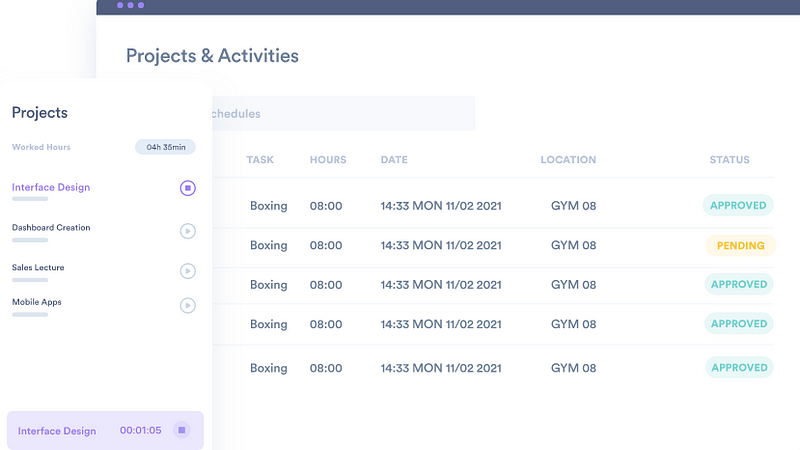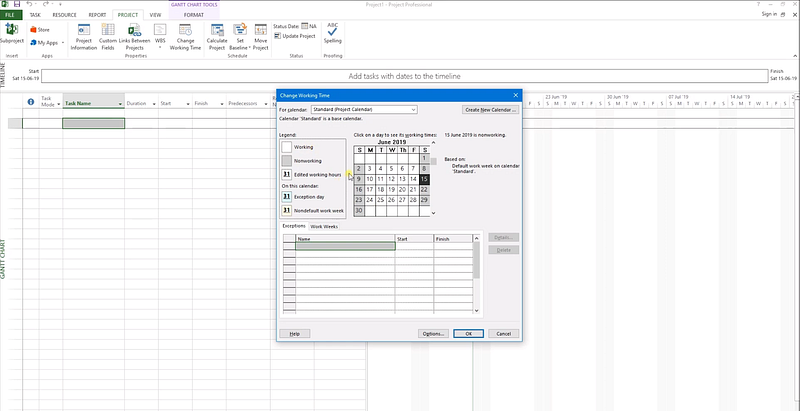Accurate project cost estimation is essential to successful project management. Make one mistake and the entire budget, timeline, and even the success of the project can be thrown off course. Don’t let that happen!
In this article, we’ll uncover the most common mistakes in cost estimation and how to avoid them. We’ll also examine why specialized software solutions are a great choice for budgeting projects and provide a comparison of the top options on offer.
Knowing how to estimate costs accurately is key – so read on to learn how to keep your project out of financial hot water!
Throughout this article, we’ll discuss:
- What is the Project Estimate Cost?
- Benefits of Project Estimate Cost
- Top 7 Mistakes With Cost Estimation In Project Management (And How to Avoid Them)
- Why Should You Specialized Software for Project Cost Estimating
- Best Software Solutions for Project Estimate Cost
- Wrap-up: Avoid Costly Mistakes with Budget Estimation for a Project

What is the Project Estimate Cost?
Project estimate cost is the process of predicting the costs of a project. It involves assessing all activities, resources, and materials needed to complete a given project in order to come up with an accurate estimate of how much it will cost.
The goal is to provide enough information for decision-makers to select which projects they should invest in and prioritize those that offer the most benefit at the least risk. This means being able to accurately predict both direct and indirect expenses associated with each task or activity within a certain timeline.
Benefits of Project Estimate Cost
Cost estimation in project management brings many benefits to the table, such as:
- Identifying resources: Project managers can identify their resources and determine how much each resource will cost. This can be especially useful when trying to allocate resources in an efficient manner.
- Planning resource allocations: Project managers can use cost estimation to plan their resource allocations accurately, making sure that the right amount of people, materials, and other resources are allocated for each task or activity within a certain timeline.
- Budgeting: Cost estimation helps project managers create a budget that is feasible and realistic while still meeting the objectives of the project.
- Improving risk management: Risk management is a top priority for many projects. With cost estimation, project managers can identify potential risks and take the necessary steps to minimize them.
- Enhancing project performance: Cost estimation helps project managers better understand their projects and ensure that they are taking the most efficient approach to complete tasks on time and under budget.
- Ensuring cost efficiency: Cost estimation is critical to ensuring that a project is completed as efficiently as possible, both in terms of resources and finances. It allows for informed decisions about where money should be allocated so that the best results can be achieved without overspending.
Top 7 Mistakes With Cost Estimation In Project Management (And How to Avoid Them)
Here are some of the most common mistakes made by project managers in cost estimation:
1. Ignoring A Few Cost Factors
One of the most common mistakes in project cost estimation is not taking into account all the factors that could affect it. For instance, you may consider a few raw materials, but forget to take into account the cost of labor and transportation. This can lead to inaccurate estimates, which will inevitably throw off your entire project budget.
To avoid this mistake, take the time to create a comprehensive list of all the items that could impact your project’s cost. This includes anything from materials, labor, and transportation costs to regulatory fees or taxes. Make sure you also consider any potential external factors such as changes in market prices or availability of resources.
2. Not Accounting for External Factors
Project cost estimation involves more than just materials and labor. You need to consider any external factors that could affect the project’s budget, such as changes in the market or availability of resources.
For example, if you are working with a limited budget and there is an unexpected increase in prices for some of your raw materials, you will have to make up for this additional cost somehow. Taking these potential changes into account before making a final decision can save you from financial trouble down the line.
Analyzing the industry closely will help you find out which external factors could affect your project’s cost and how to plan for them. Some of the data sources you can use for this purpose include industry reports, economic forecasts, and market trends.

3. Imbalanced Resources
Project cost estimation is a complex process that involves analyzing multiple elements. It’s important to ensure that all the resources required for the project are in balance—otherwise, it can lead to costly mistakes.
For instance, if you underestimate the amount of labor needed or overestimate the number of materials, you could end up spending more than necessary on one aspect and not enough on another.
A good way to avoid this issue is by using specialized software for budgeting and resource management. This will give you a better overview of how much every element will cost so that there are no surprises later on.
4. Underestimating Dependencies
Project cost estimation requires taking into account all the tasks and activities that need to be completed in order for the project to reach its goals.
However, it’s common for project managers to underestimate how long certain tasks will take due to dependencies between them. For example, if one task needs to be completed before another can begin, you might not realize the amount of time it takes until you have already started working on it.
To avoid this mistake, make sure that your estimate includes a realistic timeline with proper contingencies in case of delays or unexpected issues. This way, you won’t run into any surprises later on.
5. Relying Too Much on Software and Automation
Software and automation have made project cost estimation much easier. However, relying too heavily on these tools can lead to costly mistakes.
Software is designed to provide an accurate estimate of costs based on a given set of data points, but it cannot account for unexpected changes or factors that might occur during the project’s timeline.
It is important to remember that software and automation are only aids—they should be used in conjunction with manual calculations by experienced personnel in order to ensure the accuracy of your estimates.
On many occasions, especially with the rapid emergence of AI tools in business analytics, you may find it hard to resist the temptation of relying entirely on automated solutions. However, validating the results with human judgment will make sure that the project is headed in the right direction.

6. Lack of Risk Mitigation Plans
Risk mitigation is an essential part of project cost estimation. Without a proper plan in place, you may find yourself unable to cover unexpected expenses and delays. To avoid this, you should set aside some funds as a contingency for any unforeseen events or changes that could affect the project’s budget. This money can be used if needed to keep your project on track and ensure its successful completion.
You should also assess the risks associated with each activity before committing resources so that you know exactly how much money you need to set aside for contingencies.
Some examples of project risks include:
- Changes in the market or industry conditions.
- Delay in delivery of materials and resources.
- Unforeseen events such as natural disasters.
- Unexpected cost increases due to inflation or currency fluctuations.
7. Replacing Estimates with Expectations
When it comes to project cost estimation, many people tend to replace estimates with expectations. This is a costly mistake that can lead to inaccurate budgeting and mismanagement of resources.
Project managers often tend to consider clients’ expectations about the project more than actual estimates. This results in overestimating the budget, which can lead to cost overruns.
To avoid this, it is important to be realistic about the project’s needs and costs and use accurate data points for estimating. It is also important to discuss with clients upfront what their expectations are so you can manage them accordingly.
Why Should You Specialized Software for Project Cost Estimating?
Manual cost estimation can be time-consuming and prone to errors, making it difficult to come up with an accurate estimate. This is why specialized software for project cost estimating has become so popular in recent years.
Project management software allows you to quickly analyze data and generate estimates based on the information provided. It also helps identify potential risks or issues that could affect the budget of a project, allowing you to make adjustments as needed. Additionally, these tools provide visibility into how much money each task requires and how long it will take to complete them within your timeline.
By using such tools for budgeting and cost estimation, you can avoid costly mistakes and have a better understanding of your project.
3 Best Software Solutions for Project Estimate Cost
Fortunately, there are a few reliable software solutions for cost estimation that can help you avoid the mistakes listed above. We’ll quickly go through a few of the most popular ones.
1. Day.io – Overall the Best Project Cost Estimating Software for Small Businesses

Day.io is a cloud-based project cost estimation software that helps small businesses create detailed and accurate cost estimates for their projects. It offers features like resource planning, time tracking, budget tracking, and task scheduling to help you achieve accuracy in your estimates. Additionally, the platform comes with an intuitive user interface which makes it easy for users to understand how to use it effectively.
The platform offers detailed cost and billing breakdown, which you can use to analyze the actual cost of a project and make adjustments accordingly. Additionally, Day.io offers an integrated suite of features that helps you manage your projects more efficiently while also helping you quickly create estimates for future projects.
Features
- Detailed project task breakdown with cost and billing details
- Time tracking with real-time cost estimates
- Employee scheduling management
- Reports and control on overtime and extra hours worked
- Digital signature validation
- Automatic and manual approval for paid time off
- Real-time timesheet generation with cost breakdown for projects
Pricing
- Project time tracking: $6 per user/month
- Time & attendance tracking: $4 per user/month
2. ProjectManager – Most Comprehensive Project Cost and Budgeting Solution

ProjectManager is an online project cost estimation software that allows users to create detailed estimates of their projects, including labor costs, materials costs, overhead expenses, and more. Additionally, it offers features such as resource planning and task scheduling which help you ensure accuracy in your estimates.
The platform also includes extensive reporting capabilities which allow you to analyze the actual cost of a project versus the estimate. Additionally, ProjectManager also provides real-time collaboration tools like chat rooms so that all stakeholders are on the same page regarding costs.
Features
- Continuous reporting and estimation
- Real-time tracking of project costs
- Resource and task scheduling
- Integrated project management software
- Analytics to identify cost overruns and inefficiencies
- Multi-level approval process for tasks, estimates and invoices
Pricing
- Team: $16 per user/month
- Business: $28 per user/month
3. Microsoft Project – Intuitive Cost Estimation Solution for Project Managers

Microsoft Project is one of the most widely used project cost estimation software in the world. It offers an easy-to-use interface that allows users to quickly generate estimates for their projects. The platform’s smooth integration with Office 365 also helps project managers stay on top of their projects.
Microsoft Project also offers features such as resource planning and task scheduling, which help you ensure accuracy in your estimates. Additionally, the platform comes with integrated reporting capabilities that allow you to monitor project progress and analyze cost variance.
Features
- Integrated Office 365 for easy project management
- Resource planning and task scheduling for accuracy in estimates
- Time tracking with real-time cost estimates
- Cost variance analysis
- Project portfolio optimization tools
- Advanced reporting capabilities
Pricing
Starts from $10 per user/month.

Wrap-up: Avoid Costly Mistakes with Budget Estimation for a Project
Inaccurate project cost estimation can be a costly mistake that small businesses simply cannot afford to make. Fortunately, avoiding common mistakes and utilizing specialized software solutions makes accurate cost estimation achievable.
If you’re looking for the best project cost estimating software for your small business needs, Day.io is the top choice! With its intuitive interface, powerful features, and affordable pricing options, Day.io will take your project cost estimation to new heights – so don’t wait any longer, sign up today!

